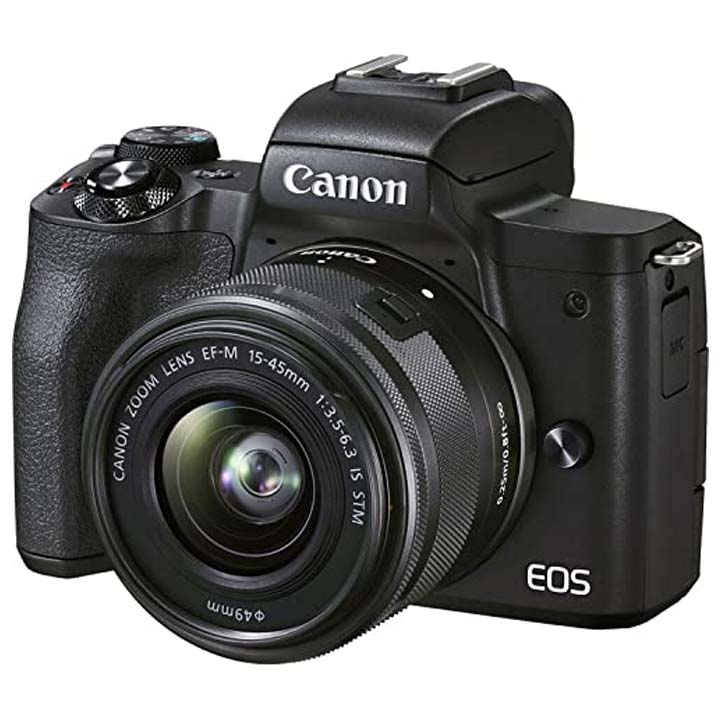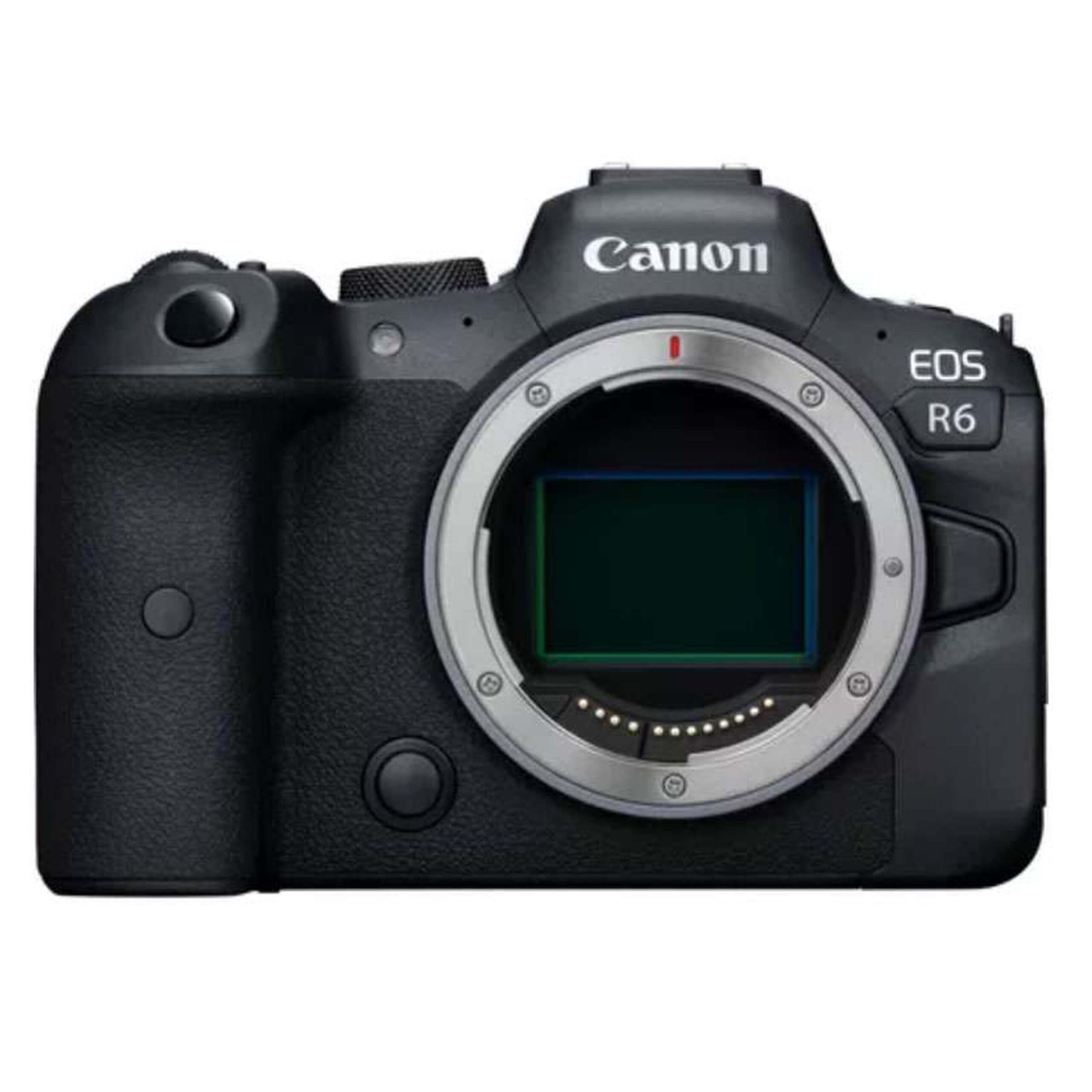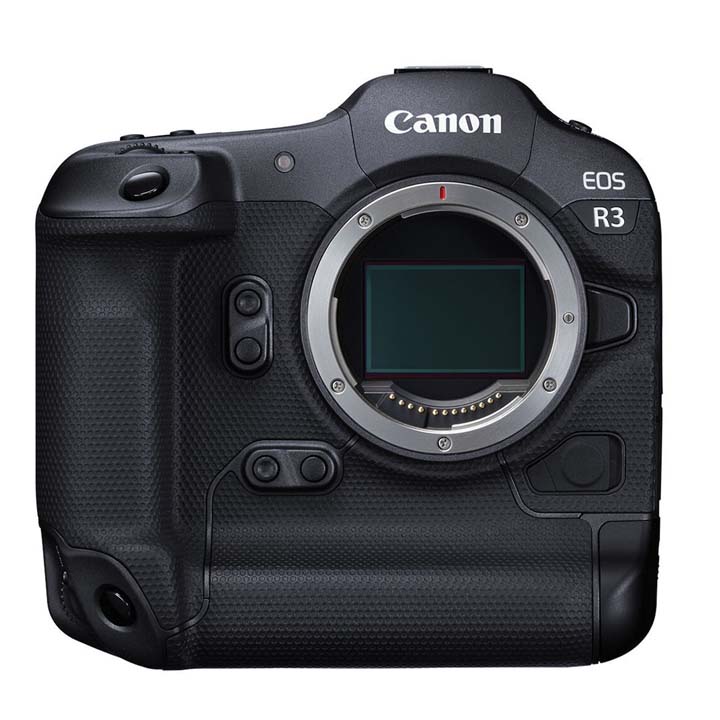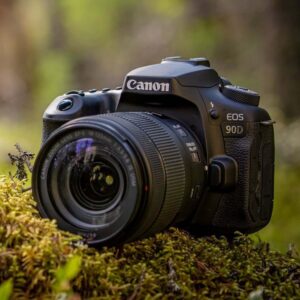Canon has earned its reputation as a trailblazer in the world of imaging technology. Among its most celebrated innovations is the Canon mirrorless camera lineup, which combines cutting-edge features with user-friendly designs. This blog explores the details of Canon mirrorless cameras, their advantages, disadvantages, price points, and how they differ from competitors. We’ll also discuss their ideal users and the reasons behind their immense popularity.
What is a Canon Mirrorless Camera?
Mirrorless cameras eliminate the traditional mirror mechanism found in DSLRs, allowing for a more compact design. Canon’s mirrorless cameras, part of the EOS R series, are known for their exceptional image quality, versatile lens options, and advanced autofocus systems.
Key Features of Canon Mirrorless Cameras
- Advanced Autofocus Systems
Canon’s Dual Pixel CMOS AF technology delivers unparalleled focus accuracy, perfect for stills and video. Models like the Canon EOS R5 offer eye-tracking for humans and animals. - Impressive Image Quality
With full-frame and APS-C sensor options, Canon mirrorless cameras cater to various needs. The Canon EOS R6 boasts remarkable low-light performance. - Compact and Lightweight Design
These cameras are ideal for travel and on-the-go photography, offering DSLR-level performance in a portable package. - Lens Compatibility
The RF mount supports RF lenses and EF lenses (via an adapter), providing access to Canon’s extensive lens lineup. - 4K Video Recording
Most models, such as the Canon EOS R8, feature 4K video recording with high frame rates, catering to content creators.
Canon EOS M50 Mark II

About this item
- 24.1 megapixel (aps-c) cmos sensor with iso 100-25600 (h: 51200).
- Digic 8 image processor with auto lighting optimizer.
- Improved dual pixel cmos af and eye detection af (still/movie servo af support).
- 4k uhd 24p and hd 120p for slow motion.
- Vari-angle touchscreen lcd convenient for vlogging and various composition.
- Lens type: Zoom
- Video capture resolution: 2160p
Advantages of Canon Mirrorless Cameras
| Advantages | Details |
|---|---|
| Superior Autofocus | Dual Pixel CMOS AF ensures fast and precise focusing. |
| Wide Lens Selection | Supports both RF and EF lenses, offering flexibility. |
| Compact Build | Lightweight design suitable for travel photographers. |
| Exceptional Video Features | 4K and Full HD options cater to vloggers and filmmakers. |
| Advanced Features | Eye and subject tracking enhance creative opportunities. |
Disadvantages of Canon Mirrorless Cameras
| Disadvantages | Details |
|---|---|
| Higher Cost | Premium models like the EOS R5 may be expensive for beginners. |
| Battery Life | Compact bodies often have smaller batteries, limiting shooting time. |
| Learning Curve | Advanced features may overwhelm first-time users. |
| Limited Budget-Friendly Options | Few affordable full-frame models compared to competitors. |
Canon Mirrorless Cameras vs. Competitors
| Feature | Canon Mirrorless | Sony Mirrorless | Nikon Mirrorless |
|---|---|---|---|
| Autofocus | Dual Pixel CMOS AF; eye tracking | Fast autofocus; excels in video | Reliable but slightly slower |
| Lens Selection | Wide range of RF and EF lenses | Large variety, but costlier | Growing Z-mount lens lineup |
| Build Quality | Lightweight yet durable designs | Compact but may feel less sturdy | Excellent ergonomics and durability |
| Video Features | 4K with advanced tracking options | 4K; high frame rates | 4K video capabilities |
| Price Range | Mid to high | High-end options dominate | Budget-friendly entry-level models |
Who Should Buy a Canon Mirrorless Camera?
- Professional Photographers
Models like the Canon EOS R5 or R3 are perfect for professionals who need high-resolution images and fast performance. - Content Creators
Cameras like the Canon EOS R8 or EOS R10 are excellent for vloggers and YouTubers, thanks to their lightweight design and advanced video features. - Beginners and Hobbyists
The Canon EOS RP and EOS R100 offer an affordable entry into mirrorless photography without sacrificing quality. - Travel Photographers
The compact design of the EOS R series ensures portability without compromising performance.
Canon EOS R6

About this item
- High Image Quality featuring a New 20 Megapixel Full-frame CMOS Sensor.
- DIGIC X Image Processor with an ISO range of 100-102400; Expandable to 204800.
- High-speed continuous shooting of up to 12 fps with Mechanical Shutter and up to 20 fps electronic (silent) shutter.
- Dual pixel CMOS AF covering approx. 100% area with 1,053 AF areas.
- Subject tracking of people and animals using deep learning technology.
- Video capture resolution: 4K UHD 2160p
Price Range of Canon Mirrorless Cameras
Canon offers mirrorless cameras for every budget:
- Entry-Level Models: Canon EOS R100 (~$500)
- Mid-Range Models: Canon EOS R6 Mark II (~$2,500)
- High-End Models: Canon EOS R3 (~$6,000)
Performance in Real-Life Scenarios
Having used the Canon EOS R6, I was impressed by its quick autofocus and incredible low-light performance. While shooting wildlife, the silent shutter mode ensured I didn’t disturb my subjects. For video work, the 4K footage was crisp, and the camera’s lightweight design was a blessing during long shoots.
Final Verdict
Canon mirrorless cameras excel in combining innovative technology with user-friendly designs. While they may come at a premium, the quality and versatility they offer justify the cost. Whether you’re a beginner exploring photography or a professional seeking advanced features, there’s a Canon mirrorless camera for everyone.
Canon Mirrorless Cameras vs. Other Camera Types: A Comprehensive Comparison
When it comes to selecting the right camera, understanding how Canon mirrorless cameras compare to other types, such as DSLRs and compact cameras, is crucial. Let’s dive into the differences to help you make an informed decision.
Canon Mirrorless Cameras vs. DSLRs
Key Differences
- Size and Portability: Canon mirrorless cameras, such as the EOS R8 or EOS RP, are significantly smaller and lighter than traditional DSLRs like the EOS 90D. This makes them ideal for travel and on-the-go shooting.
- Autofocus Technology: Mirrorless cameras feature Dual Pixel CMOS AF, offering faster and more precise focus compared to the phase detection systems in many DSLRs. This is especially beneficial for video creators.
- Viewfinder: While DSLRs use an optical viewfinder, Canon mirrorless cameras rely on an electronic viewfinder (EVF). The EVF provides a real-time preview of how your image will look with applied settings, giving an edge to mirrorless systems.
- Lens Compatibility: Canon mirrorless cameras utilize the RF mount, but with an adapter, they can accommodate EF lenses, bridging the gap for DSLR users transitioning to mirrorless.
Canon EOS R3

About this item
- 24.1MP full-frame CMOS sensor, DIGIC X processor, ISO 100-204,800 for top-notch image quality.
- 30fps electronic, 12fps mechanical shutter, 1,053 focus points for fast action shots.
- Eye Control AF and Panning Assist for intuitive focus and blur reduction.
- 4K video, dual card slots, and magnesium alloy body for versatility.
- Wi-Fi and Bluetooth connectivity for professional use.
- Weather-sealed, long battery life, and 1-year warranty for reliability.
Canon Mirrorless Cameras vs. Compact Cameras
Key Differences
- Sensor Size: Compact cameras typically feature smaller sensors, which limits their low-light performance and depth of field compared to the full-frame and APS-C sensors in Canon mirrorless cameras.
- Customization and Control: Mirrorless cameras provide extensive manual controls and customization options, making them better suited for enthusiasts and professionals. Compact cameras, like the Canon PowerShot series, are often designed for casual users.
- Image Quality: While compact cameras are great for snapshots, the image quality of Canon mirrorless cameras far surpasses them due to superior optics and advanced sensors.
Why Choose Canon Mirrorless Over Other Types?
Canon mirrorless cameras strike the perfect balance between portability, performance, and versatility. Unlike DSLRs, they are more future-focused, offering features like 4K video recording, advanced autofocus, and innovative connectivity options. Compared to compact cameras, they cater to users who demand professional-level results.
Whether you’re a seasoned professional or a hobbyist, Canon mirrorless cameras ensure you don’t compromise on quality or functionality. With their ability to adapt lenses and a steady rollout of new models, Canon’s mirrorless lineup is clearly leading the market shift away from traditional camera systems.
By choosing a Canon mirrorless camera, you’re investing in technology that not only meets today’s standards but also positions you for the future of photography and videography.




